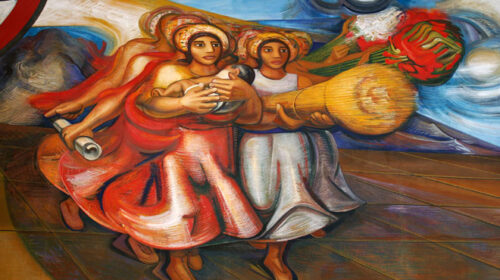Siqueiros: Walls of Passion

Siqueiros: Walls of Passion is the story of one of the great Mexican artists of the 20th century, David Alfaro Siqueiros, and the resurrection of his Los Angeles mural "América Tropical,” later championed by Chicano movement as a symbol of its oppressed culture.
Siqueiros: Walls of Passion captures the story of Mexican visual artist David Alfaro Siqueiros (1896–1974) and the resurrection of his Los Angeles mural “América Tropical,” located at the birthplace of Los Angeles and later championed by the Chicano movement as a symbol of its oppressed culture. One of the great Mexican artists of the 20th century and one of three great Mexican muralists (with Diego Rivera and José Clemente Orozco), Siqueiros was a controversy-stirring revolutionary and lifetime activist who lived with theatrical flair and painted on an epic scale.
As one of the primary advocates of modern public art, Siqueiros made his name on the world stage: he painted murals in Mexico, the U.S., Cuba, Chile, and Argentina; fought as a soldier in the Mexican Revolution and the Spanish Civil War; and even taught Jackson Pollock the drip technique in his experimental workshop in New York. He worked on an international level, promoting his revolutionary version of muralism in the United States, South America, Cuba, Europe, and the Soviet Union. As an active political figure and a committed Marxist, he was twice exiled from Mexico. In 1932 he was exiled to Los Angeles, and in 1940 to Chile following his assassination attempt on Leon Trotsky.
However, it was during his 6-month stay in California during his 1932 exile that Siqueiros defied both convention and authority to paint the artistic masterpiece “América Tropical.” Shortly after this mural’s unveiling, it was immediately whitewashed because of its political content, but ironically the whitewash preserved it until its re-discovery in the 1960s when it would inspire the Chicano Muralist Movement in Los Angeles.